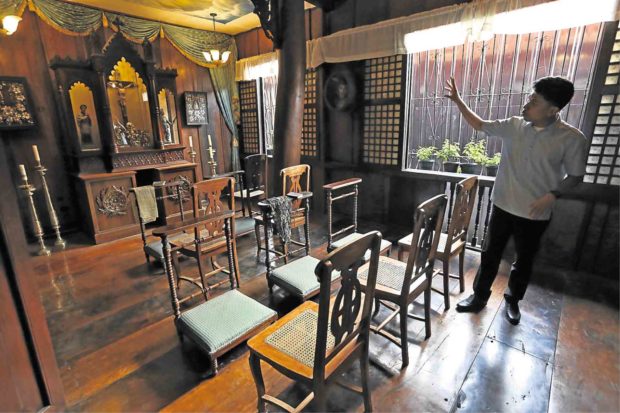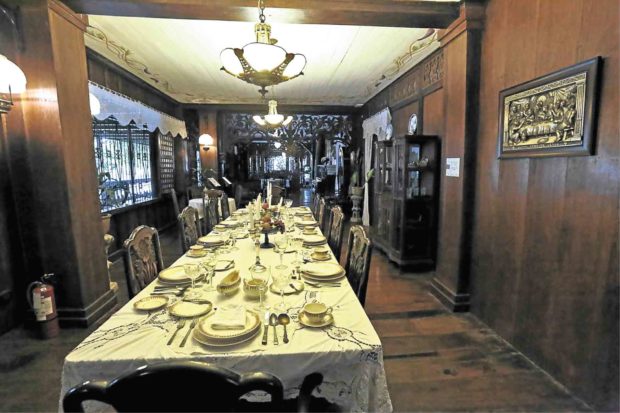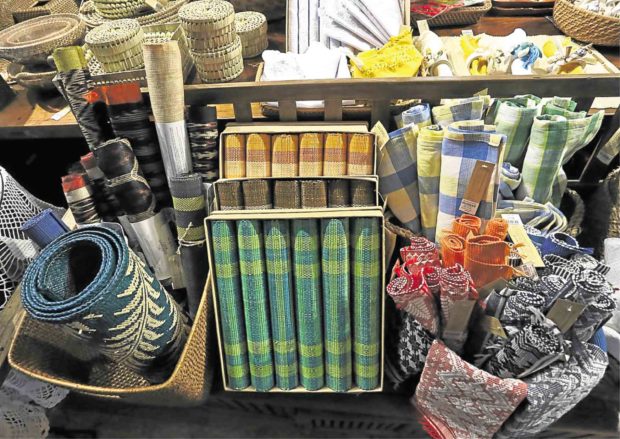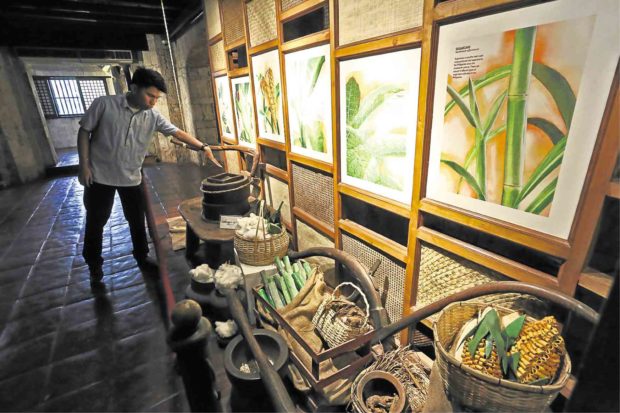Cebu’s small museum ‘with a character’
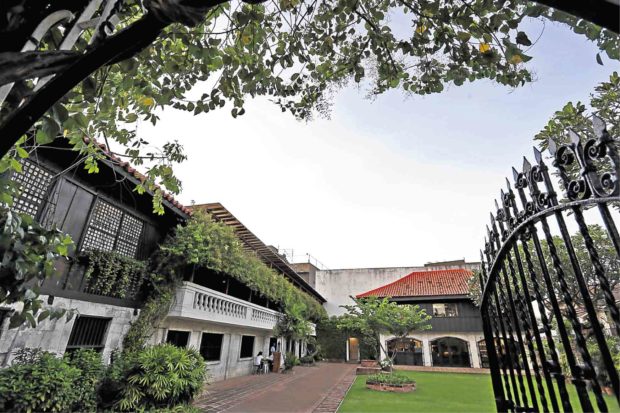
HOUSE TURNED MUSEUM Built in the 1850s, Casa Gorordo has survived two turbulent revolutionary conflicts and the Second World War. —PHOTOS BY JUNJIE MENDOZA
CEBU CITY — For three days, British tourist Jeff Reed was frolicking on a beach in Cebu with his girlfriend until he decided to check out the “small museum with a character” that his father had told him about four months ago.
Reed booked a cab through a ride-hailing app and went to Casa Gorordo Museum on Eduardo Aboitiz Street in Parian, an old district where wealthy families used to live. He was not disappointed.
“Before coming here, I only know of Cebu as the place of pristine beaches. This is a different side to Cebu and I am learning a lot about this heritage area,” he said.
Casa Gorordo reopened to the public in November 2016, two years after a massive enhancement project. It ceased to be just another old, small house built in the 1850s by businessman Alejandro Reynes during the Spanish colonial period and brought by Juan Isidro de Gorordo in 1863.
The place has been transformed into an interactive museum to make it more interesting and engaging to those who want to know about Cebu during those times. It is best experienced with a tour guide who can explain the rooms and the artifacts.
Article continues after this advertisement3D virtual map
Article continues after this advertisementTo the left of the reception desk are boards that give a brief history of the museum. To the right is the “zaguan,” the olden storage area of crops and livestock.
A three-dimensional virtual map depicts Cebu from 1614 to 1945. Beside it is a diorama of Cebu’s social life.
“This is the only one here in the city that has this map,” Reed said.
It gives him a picture of the old Parian District, he said. Families originally from or linked to the district are listed.
The first settlers were Chinese traders and craftsmen, mostly coming from Fujian province.
Four generations of the Gorordo family had lived in Casa Gorordo, according to historian Resil Mojares, who wrote the book, “Casa Gorordo in Cebu: Urban Residence in a Philippine Province 1860-1920.”
The house survived two turbulent revolutionary conflicts and the Second World War. It was acquired by the Ramon Aboitiz Foundation Inc. (Rafi) in the late 1970s and was opened as a public museum in 1983.
Nat’l historical landmark
In 1991, the National Historical Institute declared Casa Gorordo a national historical landmark for its historical and social significance.
Mojares’ book describes the current layout of the house.
On the ground floor is a mini-theater, which can accommodate 30 to 40 people. A video running for more than 10 minutes traces the development of the “payag” or “bahay kubo” (native house) to become the “Balay nga Tisa,” or a house with a clay tile roof.
A short flight of four stone steps ends in a “descanso” (landing). A higher flight of wooden stairs with banisters leads to a “caida” or anteroom and the “sala” (living room) fronting the street and flanked by two bedrooms.
The second floor has a chapel as one of the house occupants, Juan Perfecto Gorordo, served as the first Filipino Bishop of Cebu.
At the library is an old globe with the former names of countries. A photo studio, obviously a late addition, offers the chance to take “period photos” in costume.
There is a “comedor” (long dining hall) adorned with utensils and cutlery. The kitchen has American colonial fixtures.
The azotea overlooks the garden, where a deep well still exists but not functioning. Recently, it has been the venue for book launchings and lectures.
Museum curator Florencio Moreño III said Rafi continued the house traditions of the Gorordo family, which include the Sinug sa Casa Gorordo (the orginal Sinulog steps done a day after the festival’s grand parade), Kuwaresma procession, Pista ni San Juan and the display of the Gorordo Belen.
“Museums, like ours, have to continue to stay relevant. With these upgrades, we can ensure that we can keep up with the changing times,” Moreño said.
(Museum fee is P120 or P150, depending on package inclusions which consist of a tour guide, a tablet, souvenir items and drinks at the café. The guest is given a tablet to scan the QR codes affixed to the items on exhibit, which give more detailed information.)
